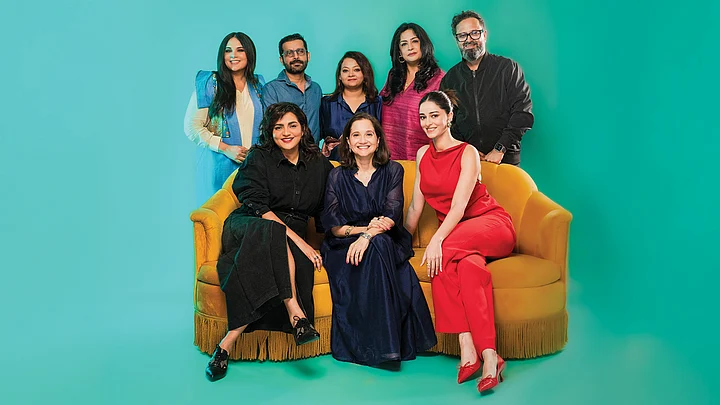The recently released O Womaniya! 2024 Report by Prime Video, spearheaded by Ormax Media and Film Companion Studios, is an eye-opening exploration of the current state of female representation in Indian entertainment. This fourth edition of the annual report analyzed 169 Indian films and series released in 2023 across nine Indian languages, spanning both theatrical releases and streaming content.
Introducing the O Womaniya! Toolkit
A key innovation in this year’s report is the O Womaniya! Toolkit, which provides a more nuanced and actionable framework to measure female representation in content, and also enable filmmakers to apply the test and eliminate biases early on in the content creation cycle. The toolkit evaluates content based on four key criteria:
- Are there named female characters with active, independent roles?
- Do female characters make pivotal economic, domestic, or community decisions?
- Do female protagonists express conflicting viewpoints central to the plot?
- Does the content avoid normalizing sexualization or violence against women?
The toolkit’s application in this year’s report revealed that streaming platforms are significantly ahead of theatrical releases in crafting content that meets these criteria, pointing to a clear opportunity for industry-wide adoption of this tool to bridge the representation gap.
Key Findings from the Report
The report presents a mix of progress and persistent challenges, particularly highlighting the disparity between theatrical and streaming content. Some of the report’s significant findings include:
1. Representation in Content:
- Only 31% of analyzed titles passed the O Womaniya! Toolkit. Streaming series led with 45% passing the Toolkit, compared to 31% for streaming films and only 18% for theatrical films.
- The report also deployed the more traditional Bechdel Test to analyze content to reveal almost half the titles falling short on this test as well
2. Representation in Marketing of Content:
- Female talk time in trailers remains disproportionately low, with women speaking only 29% of the time on average.
3. Behind-the-Scenes Inclusion:
- Only 15% of Head of Department (HOD) positions in key roles (direction, editing, cinematography, writing, and production design) are held by women. Streaming content showed a relatively higher inclusion rate (over 20%) compared to theatrical films (6%).
4. Corporate Leadership:
- Women occupy only 12% of 144 Director/CXO positions analysed across 25 leading M&E firms.
Roundtable Discussion: A Call to Action
To accompany the report’s release, Film Companion hosted a thought-provoking roundtable discussion featuring filmmakers, actors, and industry experts. Moderated by Anupama Chopra, the discussion brought together voices like Ananya Panday, Richa Chadha, Shakun Batra, Nikkhil Advani, Parvathy Thiruvothu, Ishita Moitra, and Stuti Ramachandra, Director & Head of Production, International Originals, Prime Video, India. The panel delved into systemic challenges, personal experiences, and tangible solutions for fostering inclusivity.
Key takeaways from the roundtable included:
- Streaming as a Catalyst for Change:
Panelists noted that the absence of box-office pressures allows streaming services to take more creative risks, enabling better representation of women both, in front of and behind the camera.
- Systemic Challenges:
From limited female representation in technical roles like gaffers and spot directors to inequitable workplace conditions such as inadequate washroom facilities, panelists highlighted deeply entrenched issues.
- Optimism and Action:
Industry leaders advocated for actionable steps, such as vocational training programs for women in technical roles, mandating female hires in key positions, and creating policy-driven frameworks for inclusivity on sets.
Parvathy Thiruvothu, a prominent actor, emphasized the importance of collective action: “Industry still is a place where giving employment is considered as ‘giving a chance’. There is no dignity of work, or humanizing of genders. That education needs to happen by constant conversation.”
Describing how she and her team initiated a first of its kind vocational course for women in filmmaking, actress Richa Chadha shared, “In the first film that we produced, Girls Will Be Girls, we realized that there are themes of teenage romance and it is possible that the young actors might not be super comfortable with men in the crew. So, we were trying to get a majority female crew, which was very difficult. There was only one woman gaffer, whose father was also a gaffer. As such, we decided to train women. We did a program because my assistant director said it has never been done before. We applied for a grant and trained these ten girls to be gaffers and light women, and we did this through a program called Undercurrent, and it was supported by Light N Light, the Grips company. These women are now working on different projects like Mirzapur.”
Looking Ahead
The O Womaniya! 2024 Report is not just a reflection of the current landscape but a roadmap for change. By introducing tools like the O Womaniya! Toolkit and fostering open conversations, the report sets the stage for a more inclusive future in Indian entertainment. The roundtable’s emphasis on asking uncomfortable questions and holding the industry accountable underscores a collective determination to shift mindsets and practices.
Watch the Roundtable Discussion
For a deeper understanding of the report and expert insights from the industry, watch the full roundtable discussion on Prime Video India’s YouTube Channel:
Access the Complete Report
For more detailed findings and insights, read the full report here.
This article was written in collaboration with Prime Video.
